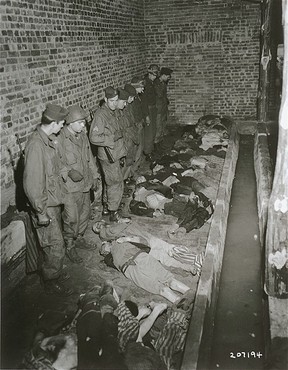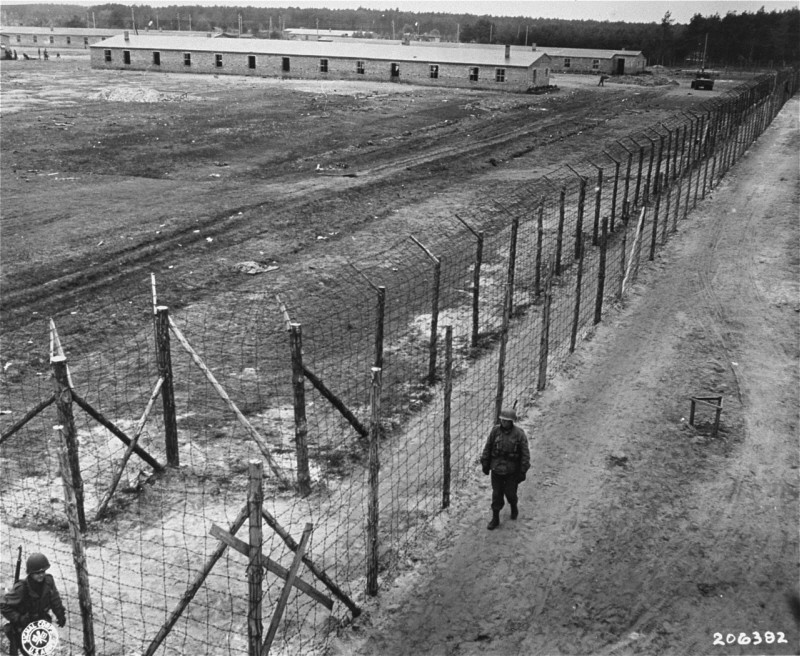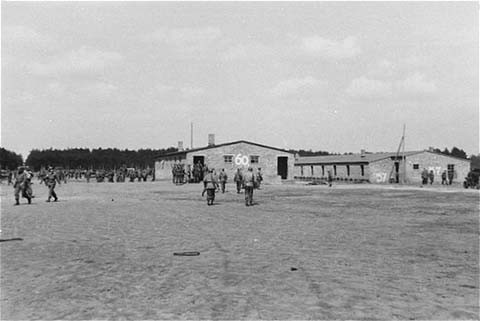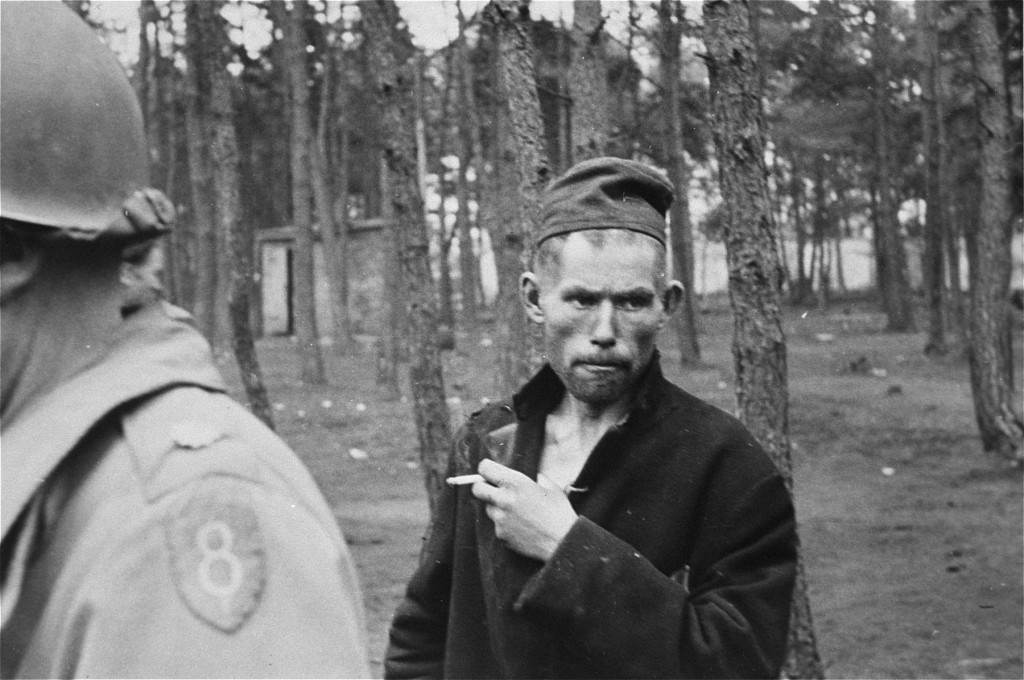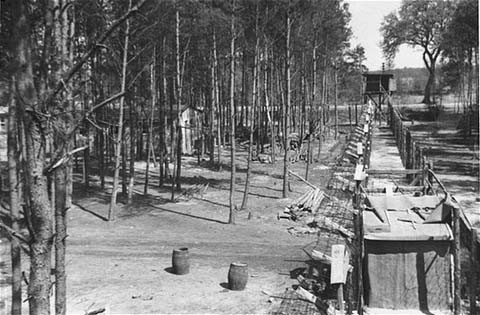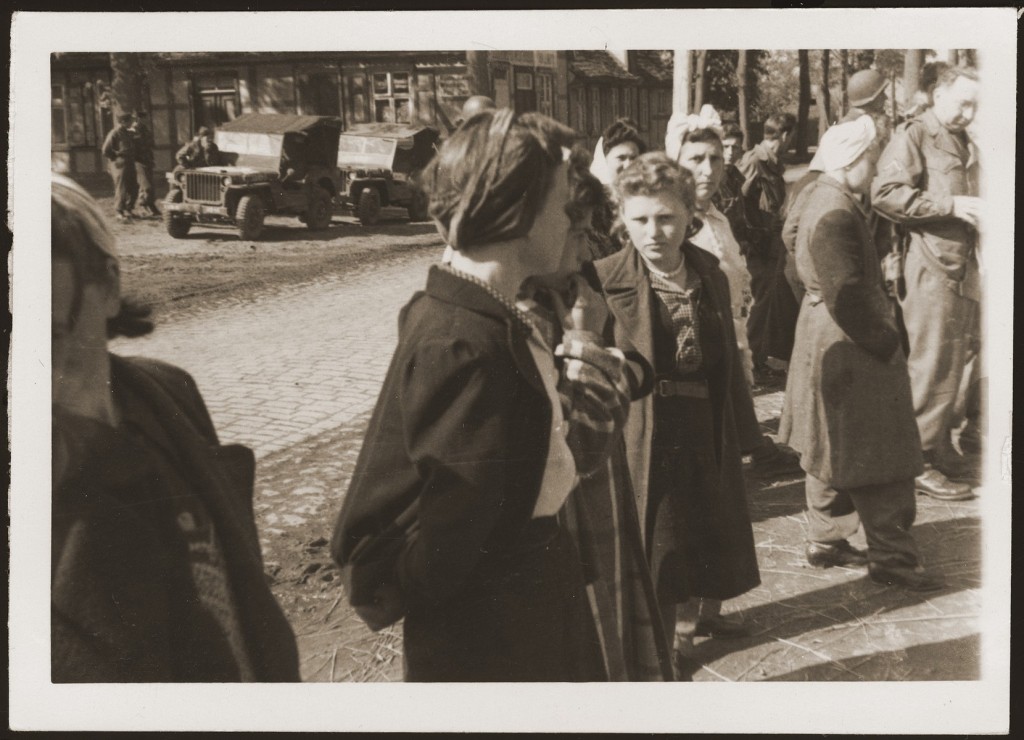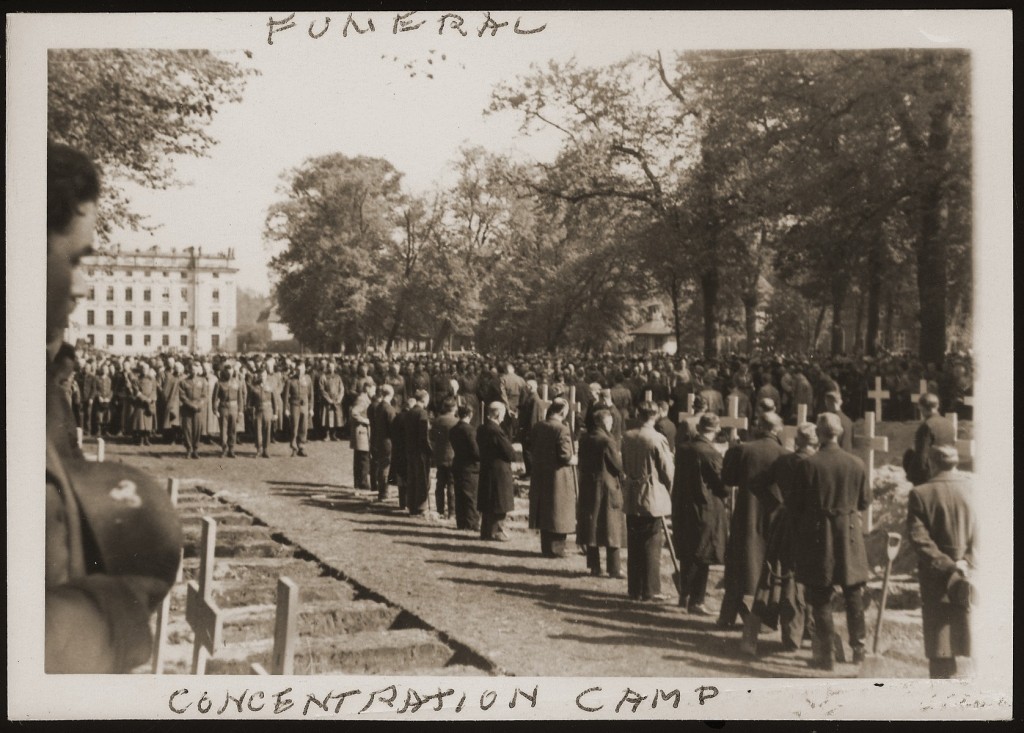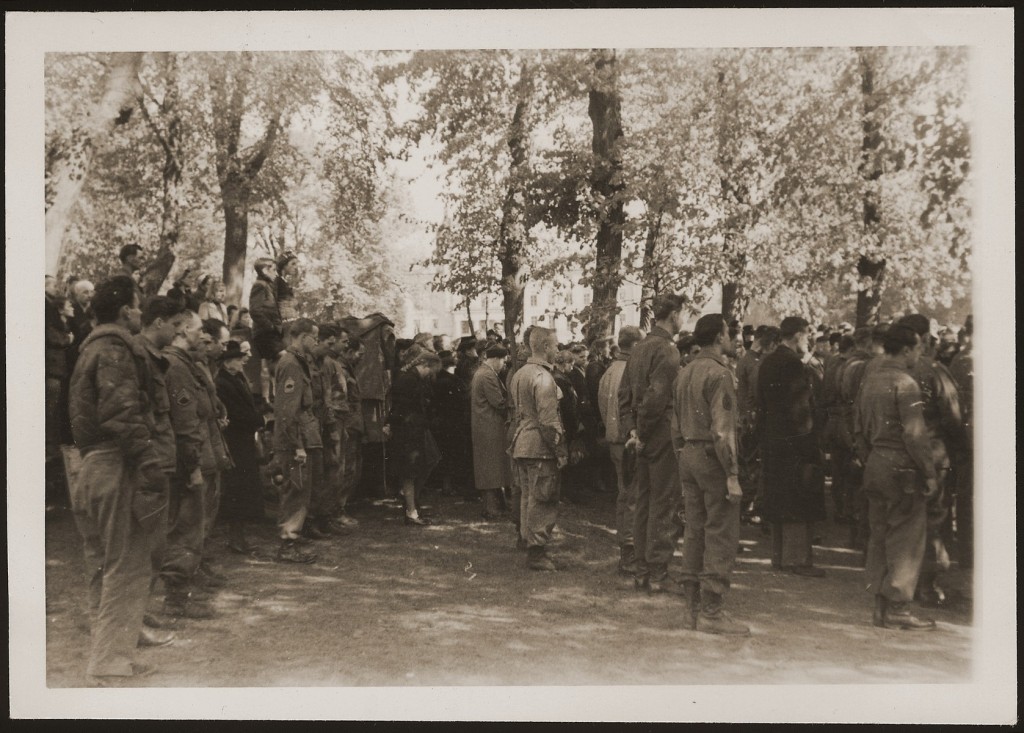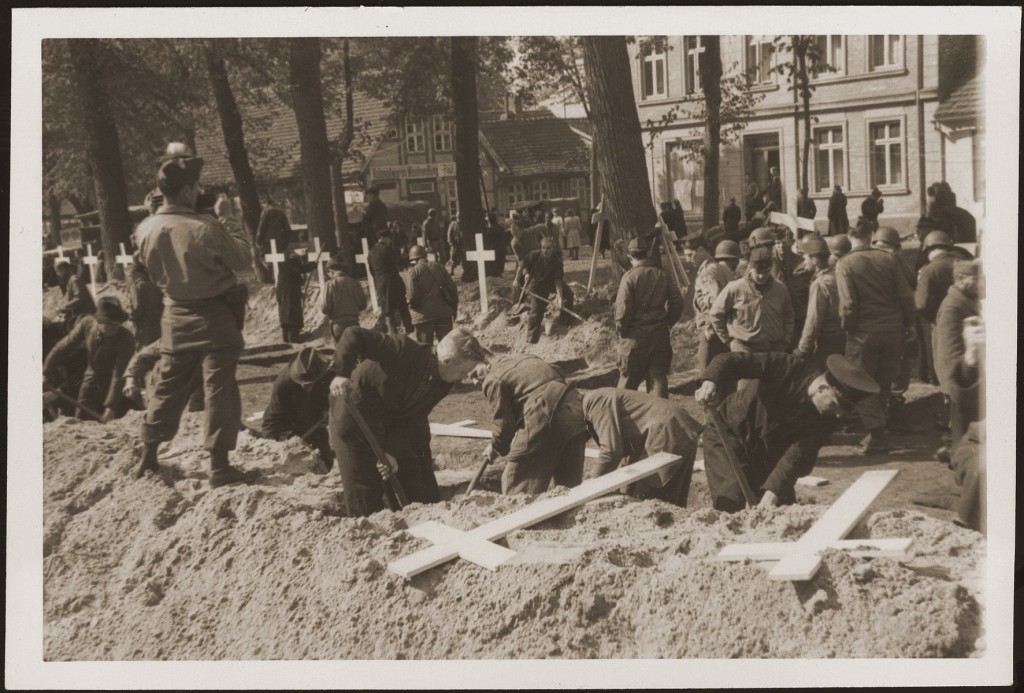
The 82nd Airborne Division during World War II
In 1985, the United States Holocaust Memorial Museum and the US Army Center of Military History began a program to honor US Army divisions that took part in the Allied liberation of Nazi camps. The US Army Center of Military History defines a liberating division as one whose official records show its presence at a camp within 48 hours of the first soldier’s arrival. The 82nd Airborne Division is among the 36 US divisions that have been recognized to date.
Key Facts
-
1
US, British, Soviet, and Canadian troops encountered concentration camps and other sites of Nazi crimes as they advanced across Europe in 1944 and 1945.
-
2
The Allied soldiers liberated sick and starving camp prisoners from Nazi tyranny. They also provided them with food, clothing, and medical aid.
-
3
The United States Holocaust Memorial Museum and the US Army Center of Military History have recognized 36 US divisions for their role in the liberation of Nazi camps.
82nd Airborne Division Campaigns during World War II
The 82nd Airborne Division began its illustrious military career as an infantry division during World War I. Formed in May 1918, it saw service in France several months later.
In March 1942, the "All American" was reactivated for service and later that year was redesignated as an airborne division. In May 1943, the unit was sent to North Africa to prepare for the invasion of Italy. In July, the 82nd was dropped into Sicily and fought its way up the Italian peninsula to Naples by early October. On D-Day (June 6, 1944), the date when the Allies launched their massive invasion of western Europe, the "All American" was dropped behind enemy lines into Normandy, France. In September, the unit parachuted into the Netherlands, and, two months later, was redeployed to thwart the German offensive during the Battle of the Bulge. In February 1945, the division advanced into Germany, crossing the Elbe River before the war ended.
The 82nd Airborne Division and the Liberation of Wöbbelin
On May 2, 1945, the 82nd Airborne Division overran Wöbbelin, a subcamp of the Neuengamme concentration camp. At its height, Wöbbelin held some 5,000 inmates, many of whom were suffering from starvation and disease. Living conditions in the camp when the 8th Infantry and the 82nd Airborne arrived were deplorable. When the divisions arrived there, they found about one thousand inmates dead in the camp. In the aftermath, the US Army ordered the townspeople in Ludwigslust to visit the camp and bury the dead.
In accordance with a policy mandated by General Dwight D. Eisenhower, the US Army in Ludwigslust ordered "all atrocity victims to be buried in a public place." Crosses were to be placed at the graves of Christians and Stars of David at the graves of Jews, along with a stone monument to memorialize the dead.
On May 7, 1945, the 82nd Airborne Division conducted funeral services for 200 inmates in the town of Ludwigslust. Attending the ceremony were citizens of Ludwigslust, captured German officers, and several hundred members of the airborne division.
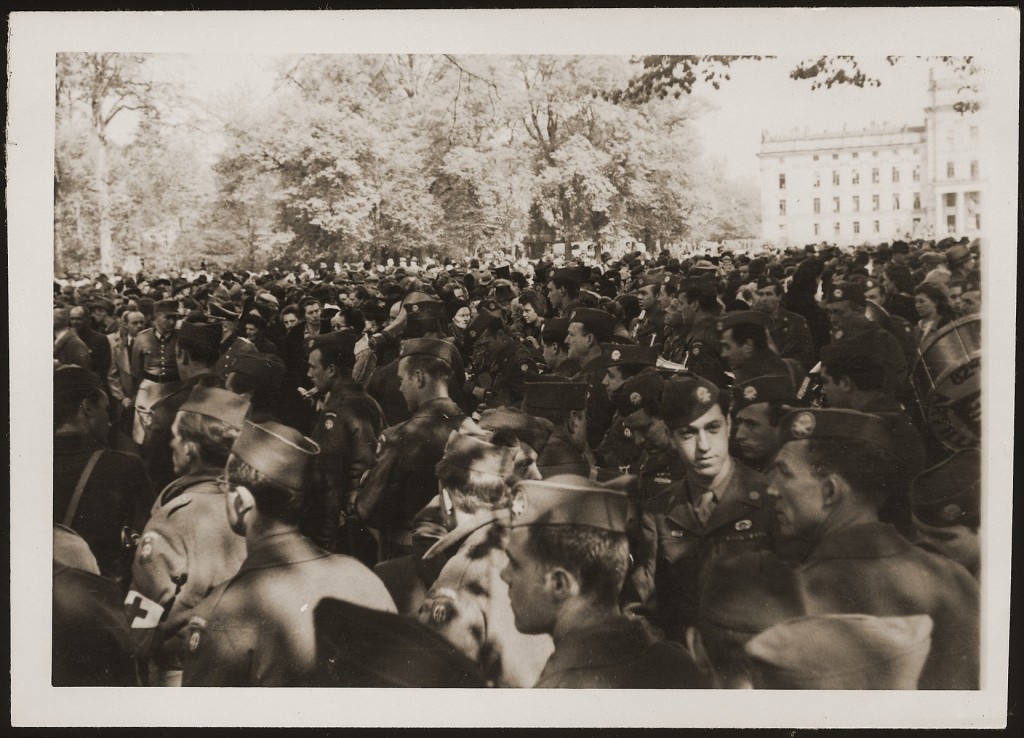
Recognition as a Liberating Division
The 82nd Airborne Division was recognized as a liberating unit by the US Army's Center of Military History and the United States Holocaust Memorial Museum in 1991.
82nd Airborne Division Battle Casualty Figures
Hundreds of thousands of US servicemen and women died or were wounded in the fight against Nazi tyranny.
The total number of battle casualties for the 82nd Airborne Division in the European Theater of Operations and the Mediterranean Theater of Operations during World War II was 9,073. In this case, “battle casualties” includes all personnel who were unable to fight in battle because they were wounded, missing, captured, or killed.
Among the battle casualties suffered by the 82nd Airborne Division, there were 1,992 deaths.
82nd Airborne Division Nickname and Insignia
The nickname for the 82nd Airborne Division was the “All American Division.” This name originated during World War I when the unit was an infantry division. The troops who made up the Division came from every state in the United States. During World War II, the Division was reactivated in 1942 and designated as an airborne unit. The 82nd’s insignia or patch reflects the division’s nickname. The shape of the patch is a red square with a blue arch or banner over the top. In the square, there is a blue circle with the letters “AA” sewn in white. Across the banner, the word “Airborne” is stitched in white letters.
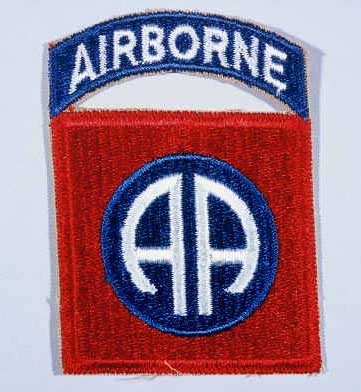
Footnotes
-
Footnote reference1.
In the aftermath of World War II, the US Department of the Army compiled casualty figures for US Army personnel. The US government published these figures in 1953. The report listed casualty numbers for the US Army for the period from December 7, 1941 (Pearl Harbor) through December 31, 1946, when US President Harry S. Truman officially declared the end of war hostilities. Army Battle Casualties and Nonbattle Deaths: Final Report, 7 December 1941-31 December 1946, Prepared by the Statistical and Accounting Branch, Office of the Adjutant General, Under the Direction of the Program Review and Analysis, Division of the Comptroller of the Army, O.C.S., (Washington: Department of the Army, 1953), p. 3-4, 84-89.
Critical Thinking Questions
What challenges did Allied forces face when they encountered the camps and sites of other atrocities?
What challenges faced survivors of the Holocaust upon liberation?


